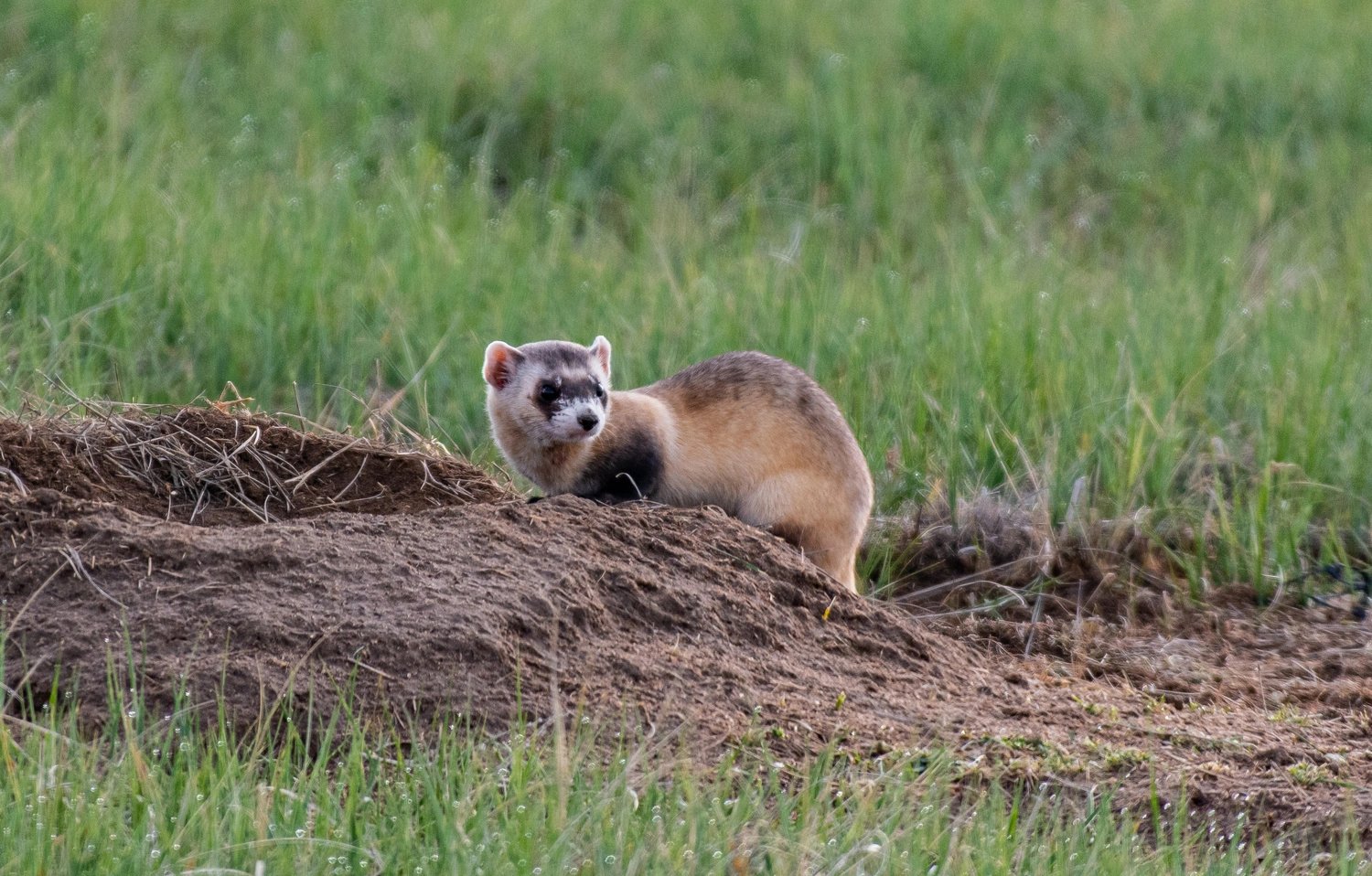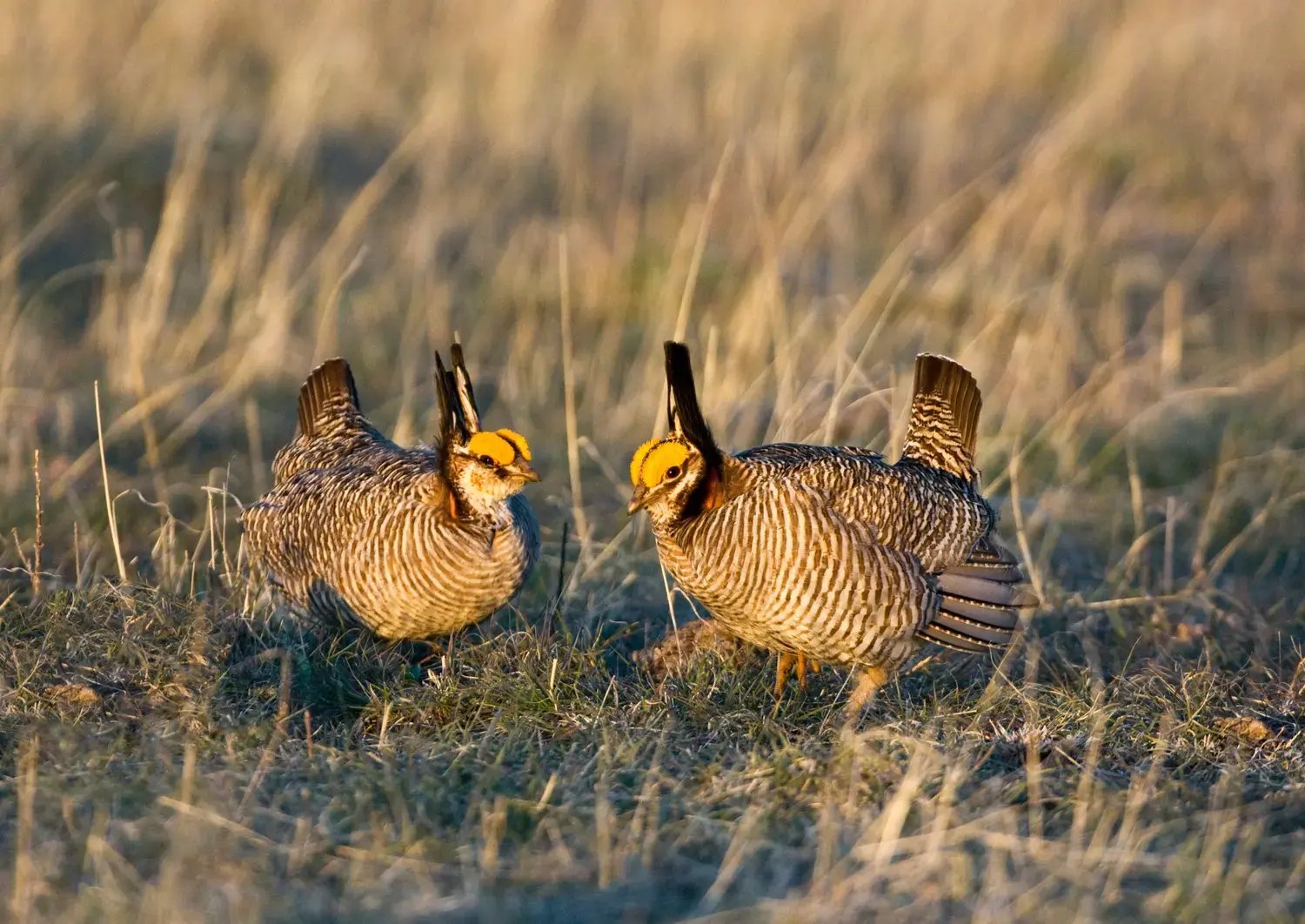Recovering America's Wildlife Act
Free Permitting Checklist
Practical Tips to Avoid Environmental Risk on all Your Projects
Download our environmental permitting checklist to get a step-by-step list of ways to protect your project from the 9 most common environmental risks.
Download Your Checklist
What is RAWA?
The bipartisan Recovering America's Wildlife Act (RAWA) is a legislative proposal to implement proactive protection for wildlife and wildlife habitats in the U.S. While official designations such as endangered species and threatened species set reactive conservation measures in motion under the Endangered Species Act (ESA), RAWA would invest in species conservation before the population reaches endangered status. The bipartisan bill, first introduced in 2021 and sponsored by Senator Martin Heinrich (D-NM) of New Mexico, puts resource infrastructure in place to provide financial and technical assistance to states and Tribal nations to engage in proactive conservation. In a show of bipartisan support, Republican senator Roy Blunt of Missouri cosponsored the RAWA in the U.S. Senate. In the U.S. House of Representatives, the cosponsors for RAWA were Representative Debbie Dingell (D-Mich.) and Representative Jeff Fortenberry (R-Neb.). After Senate Environment and Public Works committee amendments, a new version of RAWA was reintroduced to the Senate in March 2023 and will move on to congressional review after it gains simple majority support in the Senate.
Species currently listed as threatened and endangered under the Endangered Species Act (ESA) would continue to receive high-priority conservation attention under RAWA. However, RAWA differs from the ESA in that it outlines conservation funding for species of greatest conservation need, which are species in decline that have not yet been listed as threatened or endangered. Along with funding provisions for the work of conservation, RAWA takes a proactive stance on conservation through dedicated funding for state and territory conservation strategies and environmental education programs. By incentivizing more strategic conservation and greater public awareness of wildlife conservation needs and benefits, RAWA sets state agencies and the communities they serve up for successful conservation initiatives now and in future generations.
Why is RAWA Important?
A key benefit of investing in conservation before species become threatened or endangered is that proactive protection is less expensive than recovery efforts when the species has already become endangered. With more than ⅓ of U.S. plant and animal species already threatened with extinction, a proactive strategy can prevent more species from the need for intensive, expensive conservation efforts. It costs the federal government $19 million on average to recover a species listed as endangered and costs more for the private sector through economic opportunities lost due to the need for intensive habitat and species recovery. By investing in conservation before it becomes critical, RAWA will leave the door open for development opportunities and economic activity to take place alongside conservation efforts.
The World Health Organization (WHO) also points to biodiversity as essential to both ecosystem and human health: strong species biodiversity contributes to natural water filtration and better air quality. Biodiversity loss makes soil less productive, with the potential to limit global food supply production, and out-of-balance ecosystems due to biodiversity loss can contribute to the rise of infectious diseases. Regarding the medicinal value of biodiversity, there is a risk of losing understudied species before they can be analyzed for medicinal and industrial applications, limiting our future prosperity and wellness. RAWA is essential because it recognizes not only the importance of individual high-profile species but also the role of all species, small and large, that contribute to an ecosystem. This shift in perspective means stronger ecosystems and more reliable ecosystem services for people. Clean water, air, and fertile land that can support diverse plant and animal life keep people healthy, too: according to analysis from the National Wildlife Federation, living in a place with access to nature results in lower healthcare costs. Economically, the conservation of outdoor recreation areas RAWA will support is poised to boost an already booming industry: outdoor recreation generates $59.2 billion in state and federal taxes each year.
How is RAWA Unique?
RAWA will directly benefit wildlife and biodiversity in the U.S., which indirectly helps people and the economy by investing $1.3 billion in state fish and wildlife agencies and $97.5 million in Tribal wildlife conservation. This investment protects the annual revenue stream of $140 billion annually that Americans spend on outdoor recreation centered on wildlife, from birding to hunting. The outdoor recreation industry already provides an estimated 4.3 million jobs and is responsible for 2% of the United States' annual GDP; RAWA is projected to create an additional 33,600 new jobs every year in outdoor recreation, forestry, and construction.
One issue with the pre-RAWA status of species conservation is that the majority of conservation funding is provided by the sale of hunting and fishing licenses. The revenue from these licenses is in turn invested exclusively in game species, species that are desirable to fish and hunt. This often leaves nongame species that may be essential to their ecosystem out of conservation efforts. RAWA addresses this issue by providing funding on a state-by-state basis in proportion to the number of threatened species in the state and through the requirement that funds be spent on all threatened plant and animal species rather than only on species valuable to commercial hunting. However, desirable game species will still be protected under RAWA, garnering the bill support from the hunting and fishing communities. Under RAWA's proportional state funding structure, states are primarily responsible for decisions about how to invest funds, a shift from the ESA, which is executed primarily by the U.S. Fish and Wildlife Department. States are also required to match 25% of federal funding under RAWA, which may come from hunting and fishing licenses and license plate sales.

History of Wildlife Conservation
Endangered Species Act
The Endangered Species Act (ESA) was passed in 1973 to protect wildlife habitat and the at-risk species that depend on it. The ESA introduced legal definitions of terms such as "critical habitat" (habitat needed to support the recovery of a species), which aids in meaningfully enforcing wildlife habitat conservation. The ESA is complemented at the international level by The Convention on International Trade in Endangered Species of Wild Fauna and Flora (CITES), which is important to conservation in the U.S. due to the wide habitat range and cross-border migration patterns of wildlife species. The ESA and CITES were both proposed in 1973 to address the conservation of at-risk species; the two pieces of legislation are aligned to the extent that the ESA includes provisions to execute elements of the CITES. The Animal and Plant Health Inspection Service Department of the U.S. Department of Agriculture is responsible for executing CITES policy as part of the ESA. The ESA introduced the use of the term species of greatest conservation need to indicate the priority species for conservation as part of each state's State Wildlife Action Plan (SWAP).
Endangered Species List
The U.S. Fish and Wildlife Service (FWS) works in partnership with the National Oceanic and Atmospheric Agency (NOAA) and the Department of Commerce to create an official list of endangered and threatened wildlife and plants. Species on this list are federally recognized as at risk of extinction under the ESA and receive funding and protection accordingly. The ESA protects only those species which are proven to be threatened based on scientific studies. Economic evaluations of species are not allowed to be considered when evaluating a species to be listed on the federal threatened and endangered species lists. The FWS' priority in working with endangered species is conserving critical habitats and reducing threats to their survival to increase species populations and eventually remove them from the protected list.
Who Will RAWA Impact?
RAWA will have a sweeping impact across sectors, from creating outdoor recreation jobs to redirecting funds generated by environmental penalties into environmental conservation. RAWA also allocates $98M annually in funding for the 574 indigenous Tribes in the U.S. — RAWA is the first bill in history to dedicate federal funds to Tribal-led conservation. Natural resources currently under tribal management include 140 million acres featuring 730,000 acres of lakes and reservoirs, over 18 million acres of forested lands, more than 10,000 miles of streams and rivers, and tribal wildlife that depend on these resources for habitat.
How Will RAWA Impact Land Developers?
RAWA is good news for land developers. When a species is added to the list of federally threatened and endangered species, the ESA can block land development to protect critical habitat on public and private lands. Land developers can avoid sudden roadblocks and unstable development conditions by proactively managing wildlife conservation under RAWA rather than relying on the ESA to react to declining species after the decline begins.
Wildlife Agencies: Who Enforces Wildlife Conservation?
In the U.S., wildlife conservation actions are enforced and managed by various federal, state, and nonprofit agencies.
U.S Fish and Wildlife Service
The U.S. Fish and Wildlife Service (FWS) primarily manages U.S. fish and fisheries. The agency is also responsible for managing the National Wildlife Refuge System, which is made up of more than 560 acres of public lands and water features. FWS also leads the U.S. agency's response to invasive species and responding to the threat of climate change.
National Wildlife Federation
The National Wildlife Federation (NFW) is a nonprofit conservation organization that partners with state and federal agencies to benefit fish and wildlife populations. To achieve their mission, the NFW developed the Common Agenda for Wildlife, a strategic plan to grow fish and wildlife populations and support their resilience in climate change. Though the NWF is a non-governmental organization, they maintain a legislative presence through its National Advocacy Center in Washington, D.C.
State Agencies
Each state, territory, and Tribe must develop a State Wildlife Action Plan (SWAP) that outlines their plan for implementing the ESA. Collectively, US SWAPS identifies 12,000 species in greatest conservation need. SWAPS will undergo revisions in 2025 to update species of most significant conservation need designations. States that list plant species in their SWAP are eligible for a 5% funding increase as part of the Plant Supplemental Funding program. Some states may have a dedicated state fish and wildlife department to manage state fish and wildlife, or fishing and wildlife management may be housed under the respective state parks and wildlife department.
Conservation Groups
Across the U.S., local, regional, and statewide nonprofits do important on-the-ground conservation work. Conservation nonprofits may receive funding to do their work from private funds, grant funding, and partnerships with state and federal agencies.
Identifying Endangered Species
Endangered species mappers can be used to identify endangered species on your development site. Using an automated environmental due diligence tool or environmental consulting firm is vital to stay updated with regulatory and environmental permitting requirement changes such as RAWA.
Schedule a demo to learn more about endangered species mapping for your next project site.
Free Permitting Checklist
Practical Tips to Avoid Environmental Risk on all Your Projects
Download our environmental permitting checklist to get a step-by-step list of ways to protect your project from the 9 most common environmental risks.

